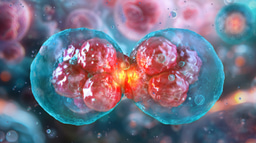Early life cold and heat exposure impacts white matter development in children
Published in Earth & Environment, Neuroscience, and Public Health
In the current climate emergency, the impact of extreme temperatures on human health is a major concern for the scientific community and society. Prenatal life and childhood are vulnerable periods to environmental exposures, and the brain is particularly susceptible during these developmental stages. There is some preliminary evidence suggesting that exposure to cold and heat may affect mental well-being and cognitive performance in children and adolescents. However, there is a lack of studies evaluating potential changes in brain structure as a result of these exposures.
In this study, we assessed brain white matter microstructure of preadolescents to identify windows of susceptibility to cold and heat exposure in early life. The analysis included 2,681 children from the Generation R Study, a birth cohort in Rotterdam, who underwent a magnetic resonance imaging (MRI) between 9 and 12 years of age. White matter was evaluated using a technique called diffusion tensor imaging (DTI). This technique measures the magnitude and direction of water diffusion within the brain’s white matter. In more mature brains, where axons are densely packed and well-myelinated, water molecules tend to diffuse predominantly in one direction, which gives lower values for a marker called mean diffusivity and higher values for another marker called fractional anisotropy. We used an advanced statistical approach to estimate, for each participant, the effect of the exposure to monthly mean temperatures from conception until 8 years of age on these MRI parameters (mean diffusivity and fractional anisotropy) measured at 9-12 years.
Susceptibility periods at pregnancy, infancy and toddlerhood
The results show that exposure to cold during pregnancy and the first year of life, and exposure to heat from birth until 2.5 years of age were associated with higher mean diffusivity at preadolescence, indicative of reduced myelination and maturation of white matter microstructure. The first two years of life are, precisely, the period with the largest changes in these markers of white matter development. Our results suggest that it is during this period of rapid brain development that exposure to cold and heat can have lasting effects on the microstructure of white matter.
In contrast, no association was found between temperature exposure in early life and fractional anisotropy at 9-12 years. One possible explanation is that these two metrics reflect different microstructural characteristics, for example, mean diffusivity is thought to be related to myelination, whereas fractional anisotropy is a better marker of axonal packing.
One important mechanism that could explain the effect of ambient temperature on neurodevelopment could be related to poorer sleep quality. Especially hot temperatures have negative impacts on sleep efficiency in children, and sleeping has an important role in healthy white matter development during infancy. Other possible mechanisms include disruption of placental functions, activation of the hormonal axis leading to higher cortisol production, or inflammatory processes.
Poorer children more at risk
A stratified analysis by socioeconomic conditions showed that children living in poorer neighbourhoods were more vulnerable to cold and heat exposure. These different vulnerabilities may be related to worse housing conditions or energy poverty, conditions that hinder the ability of coping with extreme temperatures. In the ongoing climate change crisis, identifying susceptible populations to temperature exposure is essential for implementing public health interventions aimed at reducing these inequalities, especially in low and middle-income countries facing more extreme climates and energy insecurity.
In summary, we found that the exposure to cold and heat temperatures during pregnancy, infancy and toddlerhood may have lasting impacts on children’s white matter. Our findings help to raise awareness of the vulnerability of foetuses and children to temperature, stressing the need of designing public health strategies to protect the most vulnerable communities in the face of the looming climate emergency.
Follow the Topic
-
Nature Climate Change

A monthly journal dedicated to publishing the most significant and cutting-edge research on the nature, underlying causes or impacts of global climate change and its implications for the economy, policy and the world at large.
Your space to connect: The Psychedelics Hub
A new Communities’ space to connect, collaborate, and explore research on Psychotherapy, Clinical Psychology, and Neuroscience!
Continue reading announcement




Please sign in or register for FREE
If you are a registered user on Research Communities by Springer Nature, please sign in